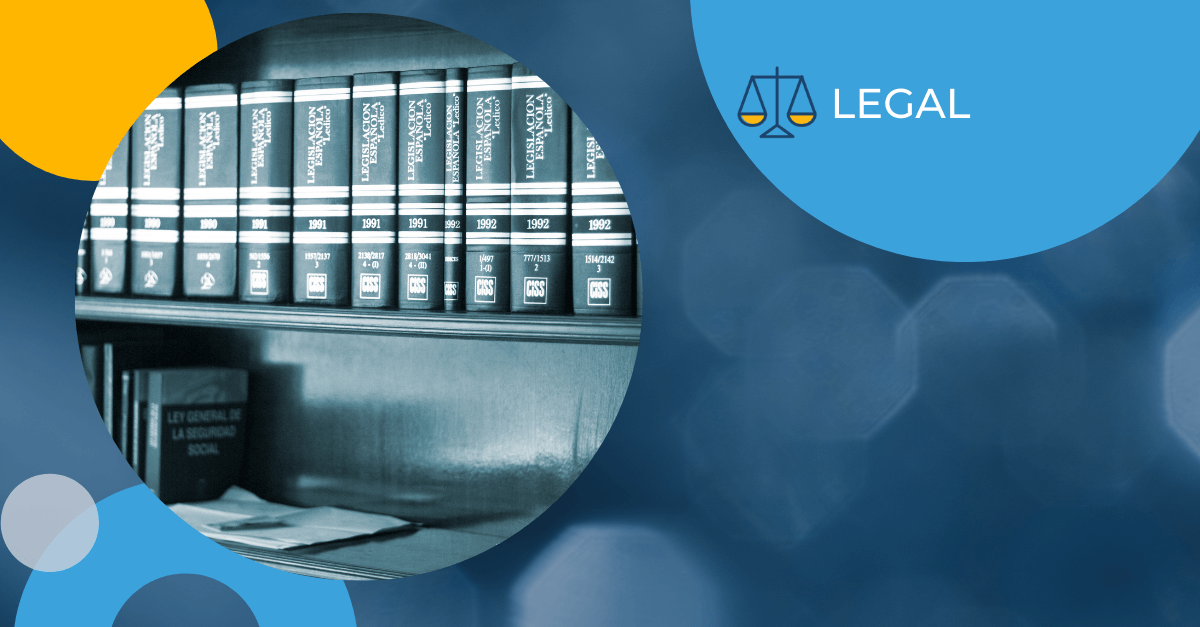Month: August 2016
7 Tips to Ensure High-Quality Legal Translation

Legal document translation is a specialized discipline that requires mastery of both the source and target languages, and an in-depth understanding of the relevant legal terminology. It helps to be familiar with the subject matter/practice area as well as the legal system where the translation will be submitted. Clear communication with your translation company, including any details you can provide about the case and how and where the translation will be used, will help ensure that the legal translation you receive is highly accurate and relevant to your needs.
Here are 7 tips to keep in mind when briefing your legal translator, to ensure the outcome meets your expectations:
- Be clear about what needs translating
Legal documents can be lengthy and may include information that doesn’t require translation. Cover pages, signature pages, address information and handwritten notes on the margins may or may not need to be translated. To save money, be clear on which sections of the document actually need to be translated.
- Talk to your translation company about how the document will be used
Some document translations are needed for information purposes only. In other cases, the translations will be submitted in court and must be certified. Knowing what the translation is for and who the audience is will help ensure that its quality and cost meets your expectations.
- Agree on a glossary of key terms
When a legal term in English has more than one foreign language equivalent, you may want to designate the foreign language term you prefer so that it is used consistently throughout the document (and throughout every document related to your specific legal latter). Getting this done at the start of the translation process will help to reduce scope for error further down the line.
- Double-check the dialect
Just as there are variations in spelling and style across Anglophone countries, the same is true for other languages. In some cases, like Chinese, Spanish and Portuguese, the differences are quite significant and potentially of critical importance in a legal content. Translating a document into Spanish for Mexico? Make sure your translator is aware of this and understands the difference between Latin American Spanish and European Spanish.
- Understand the legal system
Understanding the target country’s legal system is an often overlooked but critical aspect of legal document translation, especially if the documents in question relate to complex litigation. Each country’s legal system includes culturally-dependent concepts that are reflected in the legal language included in contracts, agreements, etc. In particular, legal documents that are translated for court must use the precise legal terminology employed in that country.
- Be clear about how you would like the document to be formatted
In general, legal documents are either presented in a bilingual format, where the original text and the translated version are side-by-side, or in a monolingual format, which is separate but follows the same format as the original document. Depending on how the translated document will be used, you may prefer one format or the other. If the document includes tables, graphs, or images, make sure to specify if you would like “mirror-image” formatting that looks exactly like the original document, or if just translating the text will suffice. Keep in mind that recreating the tables and images with the translated text will likely incur some formatting/DTP fees.
- Keep your translator in the loop
Deadlines can quickly change, especially during litigation. Court dates are pushed up, additional documents are unearthed during discovery, and suddenly that legal document translation that was due next week needs to be reviewed tomorrow. Keeping your translator in the loop about your changing needs and timeframes will help ensure that they provide the best possible legal translation.
Get the latest insights delivered to your inbox
Machine Translation and Multilingual E-Discovery

E-discovery hit prime time in the November 2015 episode of The Good Wife, appropriately entitled “Discovery”. Chumhum, a large search company, is being sued by a restaurant owner because one of its applications, Chummy Maps, has designated the restaurant’s neighborhood as potentially unsafe and hence put her out of business. The key accusation is that the safety level algorithm is based on racial demographic profiling. Fans of the mega-popular series got a peek behind the scenes of how digital forensic methods are used to extract potentially relevant evidence from terabytes of electronically stored information (ESI).
E-discovery was born in 1970 when the US Federal Rules of Civil Procedure (FRCP) were amended for the first time to make “data compilations” discoverable. If in the subsequent decade there were less than 10 e-discovery cases, in the half-decade between 2010 and 2015 there were more than 360 such cases tried before the courts in the US.[1] Examples of the types of ESI included in e-discovery are e-mails, instant messaging chats, documents, accounting databases, CAD/CAM files, and Web sites.[2]
Now take the breathtaking scope of e-discovery in and of itself and put it in the context of a lawsuit that is being conducted across borders, including countries where the ESI is not in English. Given economic globalization, multilingual litigation is no longer rare and, according to Gartner, by 2020 80% of all litigation will be multilingual.
One of the ways to manage the daunting costs and time frames of multilingual e-discovery is to use Machine Translation (MT). However there is an ongoing debate as to whether MT is good enough to ensure a reliable e-discovery process. Despite the advances in MT since its commercial debut in the 1980s, there are those who argue that MT is still too literal. Nuanced meanings in the original are lost and grammatical errors are introduced into the finished product. Specifically in the case of e-discovery, there are concerns that MT does not account for differences in legal terminology and systems across cultures. Last but not least, submitting legal documents to online machine translation systems could very well constitute a breach of confidentiality.[3]
No machine learning technology can replace the distinctly human ability to understand context and bridge cultural gaps. Here are some ideas how both human translation and MT can be used in multilingual e-discovery to effectively address both quality and cost constraints:
- MT can be effective when formal or formulaic language is used such as, for example, in legal or scientific documents.[4]
- MT can be used to give a “gist translation” that is good enough for the English speaking review team to categorize documents and get a certified human translation of the subset of documents that are most relevant.[5]
- Highly customized MT engines can be used, supported by a post-editing process involving legal translation experts.
References
[1] 10 Things You Didn’t Know About E-Discovery [infographic]
[2] AIMM – What is e-Discovery?
[3] The Importance of Human Translators for Legal Translation Projects, March 30, 2015, Merrill Corp.
[4] Multilingual Ediscovery: Options, Obstacles and Opportunities Report, Kroll Ontrack
[5] The World Is Flat: Handling Foreign Language Documents In E-Discovery Projects
Get the latest insights delivered to your inbox
5 Tips for Translating Technical Manuals

A technical or user manual provides critical information on using your product to consumers. If your consumers are non-native English speakers, then it is equally important to translate your technical manual into your end-users’ native tongue. Whether it’s user instructions for the latest smartphone, a maintenance manual for a complicated piece of machinery, or a user guide for new software, having an accurately translated technical manual will help clients make the most of the product or service and ensure their correct use of the product. It also helps limit your liability in the event that the product is used incorrectly, saves time for your customer support team and acts as a springboard for sales. Translating your technical manual may even be required by foreign regulatory bodies in order to sell your product in their jurisdictions.
But translating a technical manual is no easy task. Technical manuals tend to contain a lot of jargon, and if the product or service is newly developed, it may even contain vocabulary that has no direct equivalent in the target language. A literal translation simply won’t cut it when it comes to translating technical manuals. In addition to having a thorough grasp of the concepts involved, the technical translator needs to be able to correctly translate those concepts into the target language and be familiar with the relevant terminology in the target language.
If your technical manual requires translation, here are 5 tips to ensure that you get a technical manual translation that meets your needs:
- Look at what’s been done before
If your company has translated technical manuals in the past into the same language, you may have translation memory or a glossary in place that can be re-used, helping lower costs and saving time on your next project. If you have preferred terminology for specific languages, be sure to let your translation company know so that they can incorporate it. Finally, it’s helpful to review the fully designed version to get an idea of the look and feel of the end result. If you’ve produced similar documents in the past, you may want to maintain the same design to meet customer expectations.
- Agree on a glossary
If there are key words and terminology that you use throughout your manual, it’s important to translate them as accurately as possible and consistently throughout your manual. Again, if your company has translated manuals in the past, it makes sense to share those translations with your translator. This will help ensure that the language used to describe your product or service is consistent and meets the expectations of your customers.
- Keep it simple
Writing technical manuals is complicated enough and correctly translating technical terminology is already a challenge. You may be tempted to add a joke, word-play or culturally-specific reference to lighten things up, but it’s usually best to keep things simple. Humor doesn’t always translate well and can sound jarring in a foreign language. Review your manual to see if there is anything too culturally specific that might not transcend the language barrier. If you’re not sure, your translation company will be able to provide more guidance.
- Watch the length
Technical manuals tend to be quite long. This can’t always be helped and it’s hard to keep it brief when you are explaining a complicated process. But keep in mind that translators usually charge per word (sometimes per page) and that the longer your technical manual, the more it will cost to get it translated. Also, when translating from English into Romance Languages (French, Italian, Spanish, etc.) text tends to expand, so your manual will end up even longer. If your manual needs to stay within a certain number of words, make sure the format gives you some space to play with.
- Ask for feedback
The whole point of having a user manual translated is to make your product is accessible and easy for your customer to use. Your customers will be able to tell you just how useful your translated manual is and are invaluable source of feedback. If you’ve already published manuals in another language, ask the clients who’ve used them if they have any suggestions. If this is your first time translating a technical manual, make sure to follow up by asking a few questions and note any recommendations for the future.

